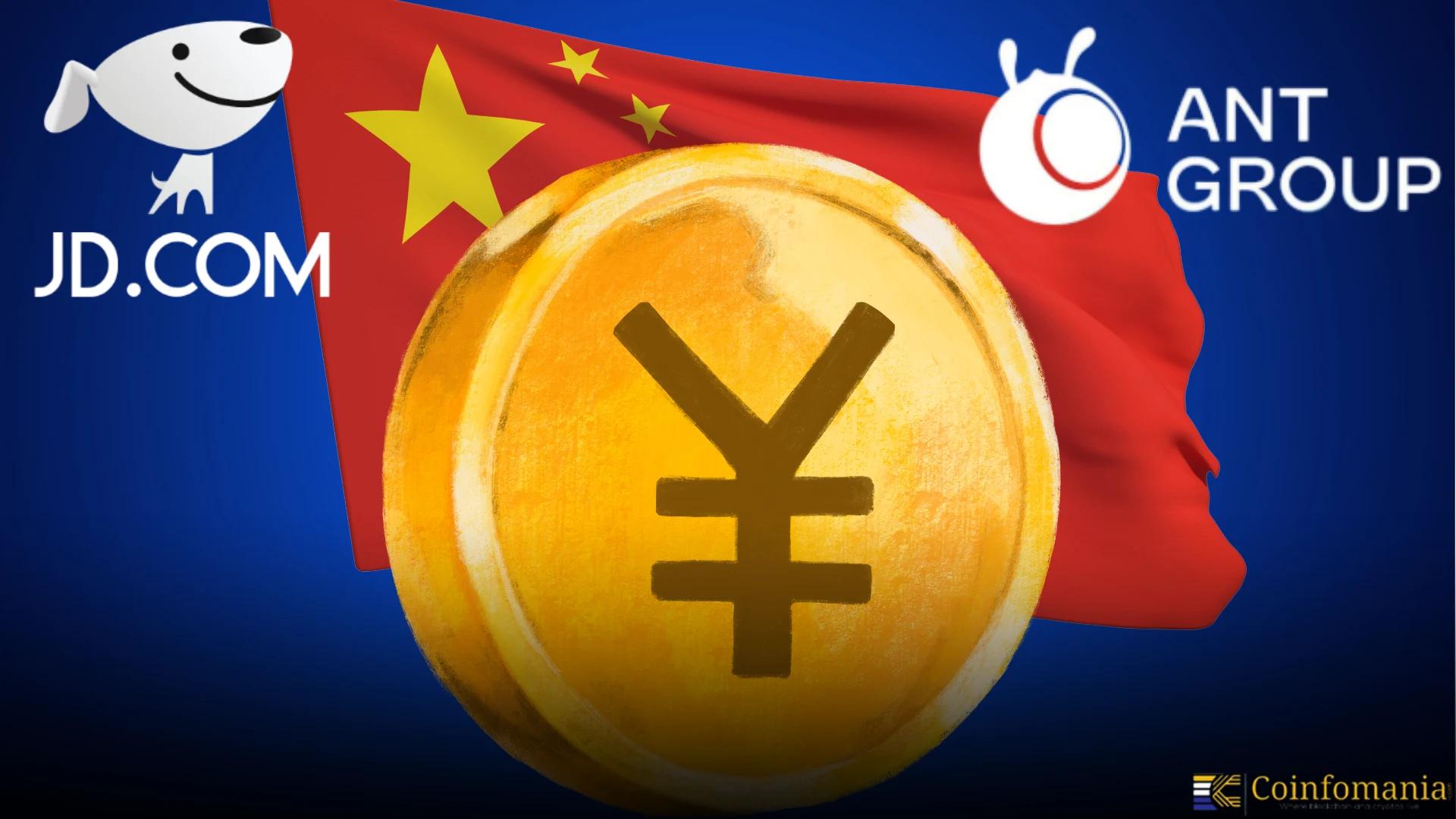China’s JD.com and Ant Group Push for Yuan Stablecoins
JD.com and Ant Group lobby for yuan-based stablecoins to challenge U.S. dollar dominance, boost yuan internationalization.

Quick Take
Summary is AI generated, newsroom reviewed.
JD.com and Ant Group lobby for yuan-based stablecoins.
The global stablecoin market is valued at $238 billion.
The stablecoins aim to boost yuan internationalization via Hong Kong.
China’s move challenges the dominance of U.S. dollar-backed stablecoins.
China’s JD.com and Ant Group Push for Yuan Stablecoins
Ant Group and JD.com are advancing the lobbying of stablecoins that are pegged to yuan. This is an effort that is meant to counter the increasing stablecoin market. There is currently a stablecoin market $238 billion globally. The Chinese technology companies are optimistic of subduing this power of the U.S dollar. They want to issue stablecoins that are pegged to the Chinese yuan.
China’s Stablecoin Plan and Global Implications
The stablecoins operating on the basis of yuan will most likely be permissioned. They shall be very compliant to KYC (Know Your Customer) regulations. Such rules fit into tough controls on digital finance in China. The new framework of Hong Kong will provide the issuance of the stablecoins. This framework becomes operative on August1, 2025. The Hong Kong digital asset rules present a perfect platform.
The principal purpose is to increase the yuan internationalization. This move will see more people use the yuan. China is optimistic to break the American hold of the U.S. dollar in the market. Even though the adoption of digital RMB (Renminbi) is still low, the stablecoins have a potential to alter the situation. Based on the statistics of BeInCrypto, as of 2022, the digital RMB is used by 20 percent of the population. But stablecoins based on yuan will only broaden its influence in international finance.
The objective of this approach of China is also to weaken the hold of the U.S. dollar. Cross-border transactions have normally been performed using stablecoins. The market is dominated by U.S-backed stablecoins. China aims at decreasing the dependence on dollar-pegged stablecoins. The action may shift world financial power.
Challenges and the Road Ahead
China faces many challenges in rolling out these stablecoins. Infrastructure issues, like liquidity rails, are still a concern. The country will need to address these challenges before the stablecoins can succeed. Additionally, other hurdles include global regulatory scrutiny. The lack of retail adoption of the digital RMB remains another obstacle. These issues may limit the stablecoin’s impact in the short term.
However, the move signals China’s intent to dominate the digital finance space. If successful, the yuan-based stablecoins could reshape the global finance system. It would reduce U.S. dollar dependency and support the yuan’s global rise.
Follow us on Google News
Get the latest crypto insights and updates.
Related Posts

Coinbase Lawsuit Sparks High-Stakes Battle Over Prediction Market Regulation
Vandit Grover
Author

Bybit Returns to the UK Market With Over 100 Crypto Trading Pairs
Vandit Grover
Author

Whale Flips Bearish After Selling $21M Bitcoin and Opening Massive 10× Shorts
Triparna Baishnab
Author